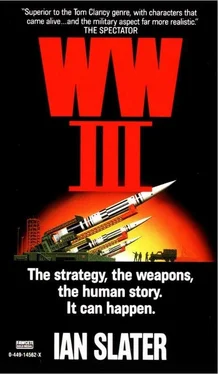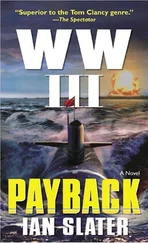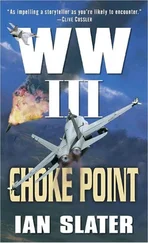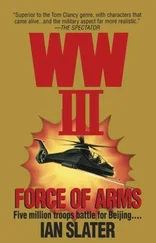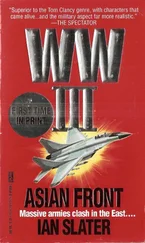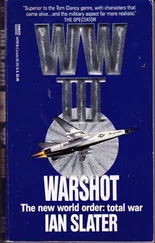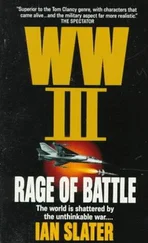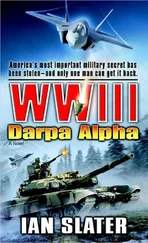Going up on the small rostrum made up of aircraft packing cases, the Marine Corps and Infantry flags behind him, Old Glory higher than the others, Freeman knew this was the most important speech he had ever made. In the front row sat his company commanders, five in all, and the padre assigned to the USS Saipan. He’d heard Freeman was a cowboy.
Freeman glanced down at the padre, at the company commanders, then up at the waiting faces. He was immediately struck by their youth — most, he guessed, no more than twenty, maybe twenty-five.
In the Mid North Atlantic the sea was turning angry, the northward flow of the Gulf Stream running up against a cold Arctic front. It was a mixed blessing for Convoy R-1, for on the one hand, it meant that enemy subs’ sonar would have a harder time separating ships’ engines from the turmoil of the air-sea interface, where hollows had become deeper, troughs more frequent. It was, however, also more difficult for the convoy escorts, or rather those that were left, to detect the noise of submarine props in the turbulence as increasingly heavy seas crashed against the ships, distorting the noise patterns even further. It wasn’t impossible for the operators to work, but it made them much more tense than usual, conscious of how false echoes, or blips wrongly interpreted, could cause the launching of a SUBROC missile from the convoy’s escorts into its own Sea King helo screen, as happened earlier.
An equal possibility, HMS Peregrine’s captain realized, was to mistake one of your screen subs as an enemy sub, or to throw it into the suspicious “unknown” category. Accordingly, at 2200 hours he ordered mirror semaphore to signal all destroyers and frigates to be especially alert to this danger lest they prematurely launch a torpedo or depth charge attack. “The situation’s complicated, Number One,” the captain added, “because none of our sub screen will, of course, come up and radio their position to us for fear of revealing themselves to Ivan.”
For this reason the captain reminded all those on the bridge and in the combat control room that they had to be particularly cautious if one of their own Trafalgar subs from R-1’s screen picked up an enemy sub. The Trafalgar’s skipper’s plan of attack would more likely than not mean he’d have to take the Trafalgar out of the fan-shaped sub screen and, in order not to reveal its position to the enemy, would be unable to notify the convoy. This could result in electronic misidentification of the kind that had caused a USS guided missile cruiser, Vincennes, to shoot down a commercial air bus in 1988.
Further down the line, in HMS Peregrine’s mess, William Spence was witnessing one of the strangest sights of R-1 ‘s voyage so far, indeed one of the strangest sights in the whole British navy. Leading Seaman Carswell, with a full cup of coffee placed carefully atop a small silver salver, proceeded to carry out the first steps in the dance that had won him fame throughout the fleet as the only steward in the fleet who, leaving the galley with a full cup of coffee, could deliver it to the bridge unspilled, no matter how rough the weather. In the worst storms, with the litheness of a prima ballerina, fighting gravity against impossible angles, he was a sight to behold, as he began his trip toward the stairwells, his legs seemingly made of rubber, sometimes walking back, giving a few paces, then recovering the lost distance the next second with a short, fast run, the cup held aloft as if he himself were in a gimbals mounting. More than once, new lieutenants had lost a day’s pay by having an unofficial wager with another officer, waiting impatiently upon the news that Carswell had left the galley and was now on his way up, expecting the seaman would trip at least once on the way. But so far it had not happened, leaving Carswell with what the ship’s company called an unbroken number of “FCDs”—full cups delivered. Several crew had already written inquiring whether Carswell’s feat qualified for mention in the Guiness Book of Records. They hoped a reply would be waiting for them when they returned to their home base at Plymouth.
The Peregrine leaned hard aport as a starboard wave struck her, the well deck awash athwartships, the bursting white cloud of spray enveloping the bridge with a sound like hail. It would soon be a force eight, the bollards already covered in foam, water rushing down the decks like a spring runoff, spilling out through the stern scuppers and swirling about the aft twin Sea Dart launcher, the flow broken but not stopped by the Limbo mortar before pouring back into the sea.
Visibility was now down to two miles, more whitecaps evident as R-1 continued to plow ahead.
“Only time I’d like being in a submarine,” Johnson said in the galley, he and Spence having left spreading the Marmite sandwiches till last. “All this bloody rockin’ and rollin’ is for the—”
“Action stations!” came the voice over the “Tannoy,” the PA system, and before Johnson could pick up another slice of bread, he, Spence, and the cook could hear the sound of running feet in the passageway outside the crew’s mess. Spence had expected a lot of shouting from petty officers and the like, but what struck him was the lack of any harshly shouted orders, the ship’s crew reacting more like a well-trained sports team than men at war.
On the bridge, the sonar operator calmly reported, “Contact, bearing two oh five degrees.”
“Half speed,” ordered the Peregrine’s captain, reducing the noise of his own ship’s prop.
To help avoid giving away Peregrine’s position, her sonar was on passive, and so no range could be registered. But the captain knew that a good operator, knowing his own set and ship, often developed a reasonably good guesstimate. “Can you give me a distance, Sonar?”
“I’d say five thousand yards, sir.”
Quickly Peregrine’s captain looked up at the computer board, comparing the vector plot of R-1’s course and his present position. It put the noise about two miles away, at a wide angle from where the convoy’s screen subs should be.
“Contact gone, sir.”
“Completely?”
“Yes, sir.”
“Odd,” the captain said, turning to his number one. “Damned odd. Any thoughts?” He looked about the bridge-it was no time for pride. “Anyone?”
“Wreck, sir — old oil drum or something moving? I mean, sir,” he continued, “something hitting it — you know, rock slide or something—”
“Could be, Chief.
“Contact bearing two six one.”
“Go active,” commanded the captain. “All round sweep.”
“Aye, sir. On active. All around sweep.” Now the inside of the Peregrine’s bow began to twang as its hull-seated transducer, in effect two metal plates buckling under electric charge, sent the distinctive sonar pinging noise into the ocean’s depths, the operator turning the echo onto the bridge’s Tannoy, the sonar sweeping from zero degrees to 360 every two minutes.
“Contact. Bearing two six one. Range eight hundred yards. Moving fast… Contact. Bearing two six oh. Range seven six oh yards. No props noise, sir. I’d say a mine.”
“Torpedo motor?”
“No, sir. No beat count.”
Without taking his eyes from the sonar screen, the captain waited for the two seconds as the computer digitized all incoming information, telling him that whatever it was, was coming at them at forty miles per hour. Impact in 4.71 minutes — on the starboard side — and countermeasures giving him the IAVS— impact avoidance vector and speed.
“Notify all ships. Steering by IAV.” Unhappily he knew that none of the merchantmen had IAV capability. “By voice to transports. Plain language.”
Читать дальше
